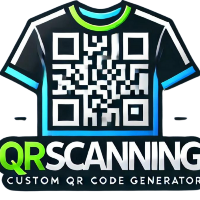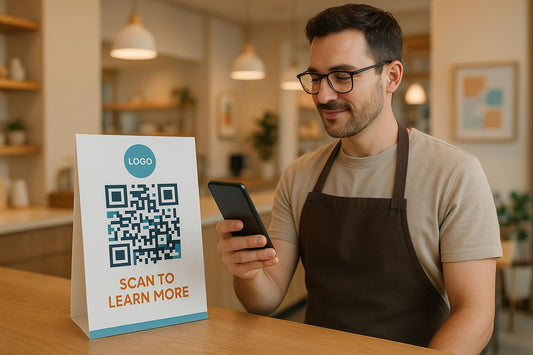
Share
As businesses continue to innovate, incorporating modern technology becomes essential. One such technology proving to be a game-changer is the QR code, especially the dynamic QR code. If you're wondering how to create a dynamic QR code and why it's beneficial for your business, you're in the right place.
What is a Dynamic QR Code?
A dynamic QR code offers flexibility and advanced features that static QR codes lack. Unlike static QR codes, where the data is directly encoded into the code itself, dynamic QR codes contain a short URL that redirects to any content of your choice. This means you can change the destination URL without altering the QR code itself. These codes are particularly useful for businesses looking to optimize marketing campaigns or enhance user experiences continually.
Benefits of Using Dynamic QR Codes
- Versatility: Change the content anytime without reprinting the QR code.
- Trackability: Gain insights into customer behavior through scan analytics, such as location and time of scans.
- Cost-Effective: Save money on reprints since updates can be made without changing the QR code.
- Security: Set up password protection and expiration dates for secure content.
- User Experience: Provide a seamless and engaging interaction by programming QR codes to lead to apps, websites, or multimedia content that enhances a customer's journey.
Step-by-Step Guide on How to Create a Dynamic QR Code
Step 1: Choose a QR Code Generator
Select an online QR code generator that supports dynamic QR codes. Popular options include QR Code Generator, QR Tiger, and Beaconstac.
Step 2: Select the Type of Content
Decide on the type of content you want your QR code to lead to. It could be a landing page, a PDF document, a video, or an app download link.
Step 3: Enter the Destination URL
Enter the destination URL in the QR code generator. This is the link that users will be directed to when they scan your QR code.
Step 4: Customize Your QR Code
Personalize your QR code by changing its color, adding a logo, or customizing its shape. Customization makes your QR code stand out and aligns it with your branding.
Step 5: Test the QR Code
Before sharing, test your QR code with a smartphone to ensure it points to the correct URL and functions properly.
Step 6: Download and Share
Once satisfied, download the QR code in a high-resolution format for printing or digital use. Share your dynamic QR code across your marketing materials, including flyers, brochures, advertisements, and digital platforms.
Optimizing QR Code Use for Local Search
- Location-Based Offers: Use dynamic QR codes to offer location-based deals or discounts to attract local customers.
- Google My Business: Direct customers to your Google My Business page to improve local SEO and increase visibility.
- Local Partnerships: Collaborate with local businesses by sharing QR codes that link to maps, events, or news related to your community.
By implementing these strategies, your business can harness the full potential of dynamic QR codes to engage local audiences and enhance your local search presence.
Conclusion
With the guidance above on how to create a dynamic QR code, you're now equipped to enhance your business strategy effectively. By leveraging dynamic QR codes, you'll not only improve your customer interaction but also gain valuable insights for future improvements.
Start using QR codes for your business today! For more personalized solutions or a free quote, don't hesitate to reach out to our QR Code Solutions team. Let's take your business to the next level!
📞 Call Us: (833) 723-2800
✉️ Email: customercare@qrscanning.com
🌐 Visit Us: www.qrscanning.com


